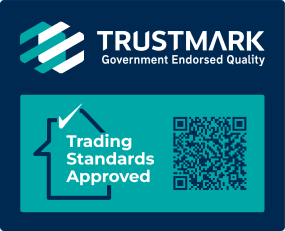As global temperatures rise and urban environments become denser, the issue of overheating in buildings has garnered significant attention. Overheating not only affects occupant comfort but also impacts energy efficiency and building performance. The Chartered Institution of Building Services Engineers (CIBSE) has developed the TM52 standards to combat this growing problem. This blog post explores what overheating in buildings entails, delves into the TM52 standards, and offers a step-by-step guide on how to apply these standards to assess and mitigate overheating in both new and existing buildings.
What is Overheating in Buildings?
Overheating occurs when indoor temperatures exceed comfortable levels, leading to thermal discomfort and potential health risks for occupants. The primary causes of overheating include:
- Inappropriate Design: Features like large south-facing windows and extensive insulation aimed at reducing winter heating demand can inadvertently cause high internal temperatures during summer.
- Poor Management: Inefficient management of heating, ventilation, and air conditioning (HVAC) systems can exacerbate overheating.
- Insufficient Services: Lack of adequate shading, ventilation, and cooling mechanisms also contributes to overheating.
Impacts on Occupant Comfort and Building Performance
High indoor temperatures can negatively affect occupants by reducing comfort, productivity, and overall well-being. Prolonged exposure to heat can lead to health issues such as heat exhaustion and dehydration. Additionally, overheating can increase the energy demand for cooling, thereby reducing a building’s energy efficiency and increasing operational costs.
Understanding TM52 Standards
The TM52 standards, established by CIBSE, provide a methodology to evaluate and mitigate the risk of overheating in buildings. These standards are based on an adaptive thermal comfort model, which considers the adaptability of occupants to varying outdoor temperatures.
Key Aspects of TM52
- Purpose: To provide a structured approach to assessing and managing the risk of overheating in buildings.
- Methodology: Utilises the adaptive thermal comfort model to evaluate thermal comfort levels and recommend mitigation strategies.
- Criteria: TM52 outlines three compliance criteria to assess overheating risk:
-
- Criterion 1: Hours of Exceedance: Evaluates the number of hours indoor temperatures exceed the comfort threshold (Tmax) by 1°C during the non-heating season.
-
- Criterion 2: Daily Weighted Exceedance: Assesses the cumulative degree-hours by which temperatures exceed Tmax, ensuring it does not surpass six-degree hours in one day.
-
- Criterion 3: Upper Limit Temperature: Sets an upper threshold (Tmax + 4°C) that should not be exceeded to avoid extreme overheating.
Applying TM52 Standards: A Step-by-Step Guide
- Data Collection
Gather Relevant Data
- Collect weather data, building design specifications, occupancy profiles, and historical temperature records.
- Utilise future weather files such as DSY1, DSY2, and DSY3 to account for projected climate changes.
- Analysis
Create a Dynamic Simulation Model
- Develop a dynamic simulation model to predict indoor temperatures under various scenarios.
- Identify potential overheating hotspots and assess the impact of different design and operational strategies.
- Assessment
Evaluate Against TM52 Criteria
- Use the collected data and simulation results to evaluate the building’s performance against the three TM52 criteria.
- Identify areas where the building fails to meet the criteria and determine the severity of the overheating risk.
- Mitigation Strategies
Implement Cooling Strategies
- Passive Measures: Incorporate shading devices, increase natural ventilation, and use reflective materials to reduce heat gain.
- Active Measures: Optimise HVAC systems, consider the use of mechanical cooling, and ensure efficient operation and maintenance.
- Behavioural Adjustments: Educate occupants on effective ways to maintain thermal comfort, such as using blinds and adjusting clothing levels.
- Monitoring and Continuous Improvement
Post-Occupancy Evaluation
- Conduct post-occupancy evaluations to verify the effectiveness of implemented strategies and identify any discrepancies between design expectations and actual performance.
- Continuously monitor indoor temperatures and adjust strategies as needed to maintain compliance with TM52 standards.
Real-World Case Studies
Case Study: Office Building in Central London
A recent project in Central London applied the TM52 standards during its design phase. By integrating dynamic simulation modelling and implementing both passive and active cooling strategies, the building successfully achieved compliance with all three TM52 criteria. As a result, the building reported a 20% reduction in energy consumption for cooling and significantly improved occupant comfort during the summer months.
Conclusion
Addressing the issue of overheating in buildings is critical for ensuring thermal comfort, energy efficiency, and overall building performance. The TM52 standards provide a comprehensive framework for assessing and mitigating overheating risks. By following the step-by-step guide outlined in this post, building designers, owners, and managers can effectively apply TM52 standards to create comfortable and sustainable living and working environments.
Embracing these standards and implementing the recommended strategies will not only improve occupant well-being but also contribute to broader sustainability goals. As climate change continues to pose challenges, adopting TM52 standards will be essential for the future of building design and construction.




